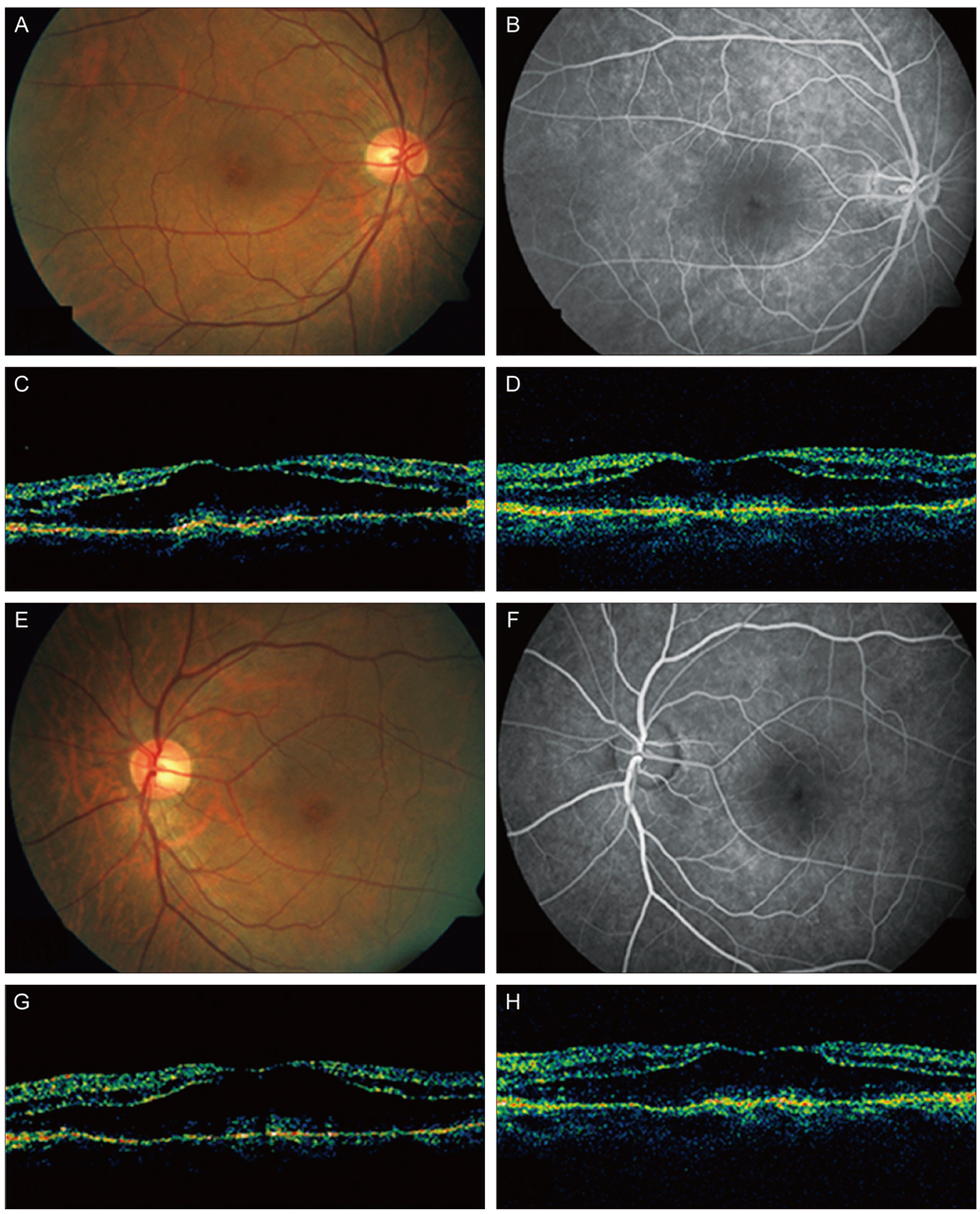Korean J Ophthalmol.
2012 Oct;26(5):388-390. 10.3341/kjo.2012.26.5.388.
A Case of Cystoid Macular Edema Associated with Paclitaxel Chemotherapy
- Affiliations
-
- 1Department of Ophthalmology, Busan Paik Hospital, Inje University College of Medicine, Busan, Korea. maekbak@hanmail.net
- 2Department of Ophthalmology, Haeundae Paik Hospital, Inje University College of Medicine, Busan, Korea.
- KMID: 1397491
- DOI: http://doi.org/10.3341/kjo.2012.26.5.388
Abstract
- We encountered a patient with cystoid macular edema (CME) secondary to paclitaxel use. A 57-year-old man presented with gradual decreased bilateral vision. His chemotherapeutic regimen consisted of bevacizumab, paclitaxel (175 mg/m2 for 5 months), and carboplatin. Optical coherence tomography imaging revealed bilateral CME greater than 500 microm. However, one year later, visual acuity was improved, best-corrected Snellen visual acuity was 40 / 80 in each eye, and CME was spontaneously improved. Our study confirmed that macular edema associated with paclitaxel use shows spontaneous resolution and improvement of visual acuity after a change of chemotherapeutic regimen.
Keyword
MeSH Terms
-
Adenocarcinoma/drug therapy
Antineoplastic Agents, Phytogenic/*adverse effects
Antineoplastic Combined Chemotherapy Protocols/therapeutic use
Humans
Lung Neoplasms/drug therapy
Macular Edema/*chemically induced
Male
Middle Aged
Paclitaxel/*adverse effects
Remission, Spontaneous
Tomography, Optical Coherence
Visual Acuity
Figure
Cited by 1 articles
-
Uveoretinal Adverse Effects Presented during Systemic Anticancer Chemotherapy: a 10-Year Single Center Experience
Ah Ran Cho, Young Hee Yoon, June-Gone Kim, Yoon Jeon Kim, Joo Yong Lee
J Korean Med Sci. 2018;33(7):. doi: 10.3346/jkms.2018.33.e55.
Reference
-
1. Tso MO. Pathology of cystoid macular edema. Ophthalmology. 1982. 89:902–915.2. Hofstra LS, de Vries EG, Willemse PH. Ophthalmic toxicity following paclitaxel infusion. Ann Oncol. 1997. 8:1053.3. Teitelbaum BA, Tresley DJ. Cystic maculopathy with normal capillary permeability secondary to docetaxel. Optom Vis Sci. 2003. 80:277–279.4. Telander DG, Sarraf D. Cystoid macular edema with docetaxel chemotherapy and the fluid retention syndrome. Semin Ophthalmol. 2007. 22:151–153.5. Joshi MM, Garretson BR. Paclitaxel maculopathy. Arch Ophthalmol. 2007. 125:709–710.
- Full Text Links
- Actions
-
Cited
- CITED
-
- Close
- Share
- Similar articles
-
- A Case of Paclitaxel-induced Maculopathy Treated with Methazolamide
- The Effect of Intravitreal Triamcinolone Acetonide Injection according to the Diabetic Macular Edema Type
- Comparison of Effects of IVTA and Photocoagulation, Depending on Types of Diabetic Macular Edema
- A Case of Secondary Macular Hole Formation after Phacoemulsification in a Vitrectomized Eye
- Prophylactic Intracameral Vancomycin Irrigation and Cystoid Macular Edema



